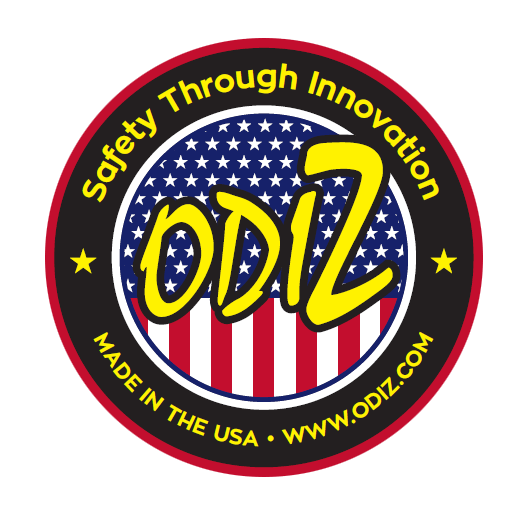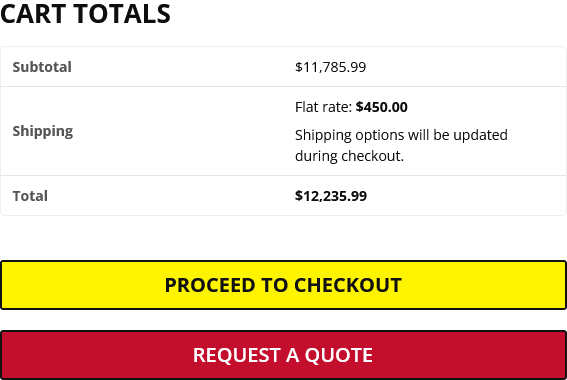Odiz Anti-Restart Interlocked Drill Press Mill Lexan Guard
$999.00
Odiz Safety Interlocked Drill Press Mill Guard
All in one solution
Made in the USA!!!
VIDEO: Full video Overview, functional overview, functional tests, and conclusion
VIDEO: Demonstration of RESET Recognition option and guard feature overview
Not sure where to start? Reach out to our team to learn more.
To request more information about this product or service, please complete the form below. You can also chat live with one of our specialists via the widget in the bottom-right corner of your screen or call us at (574) 318-4333.
VIDEO: Full video Overview, functional overview, functional tests, and conclusion
VIDEO: Demonstration of RESET Recognition option and guard feature overview
Odiz Interlocked Drill Press Mill Guard
This is an all in one solution that is designed and built in the USA that includes:
- 120-Vac power controls
- Drill Press will not start without guard in place
- Start/Stop controls
- Motor power drops out on power loss
- Latching E-stop (cuts power to drill motor and circuitry)
- Optional RESET recognition feature
- Inline 10/15-Amp Circuit Breaker for motor/employee protection
- Double safety switch on guard mechanism
- Adjustable height for work piece variation
- Custom Lexan/Polycarbonate shields to fit you operational needs (Standard Size 6″ Height X 12″ Wide)
- 24″ stainless shaft for Industrial environment; guard travel based on guard size. (Optional 36″ & 48″ lengths)
- Aluminum guard fittings and Stainless guard bar for Industrial environments
- OSHA/ANSI compliant
- UL Listed enclosure and electrical components
- 120-Vac 8′ cord
- 120-Vac 1′ plug
Options:
- Custom shaped can be done as well
- In some instances, there are machine functions on the side of the drill press, thus an optional mounting bracket extensions may be required.
- Standard 24″ stainless bar can be upgraded to 36″ or 48″ length
Easy to install:
- Mount to drill press or mill
- Align height of guards
- Plug the Odiz unit into a standard 120-Vac socket
- Plug the drill press into the Odiz interlocked Unit
- Recommended to remove existing machine hard switch
Lead-time:
Built to order 5-10 working days but could vary based on quantity and material position.
1910.212(a)(3)(iv)(e) – Milling Machines
OSHA 1910.212(a)(3)(iv)(e) — Milling Machines
OSHA 29 CFR 1910.212(a)(3)(iv)(e) identifies milling machines as equipment that usually requires point-of-operation guarding.
Milling machines use rotating multi-edge cutters to remove material from workpieces, producing high-speed motion, sharp tool exposure, and ejected metal chips.
Without proper guarding, operators are at risk of lacerations, entanglement, impact, and eye injuries.
Primary Hazards of Milling Machines
- Contact with rotating cutters: Exposed cutting tools can easily catch hands, gloves, or clothing.
- Flying chips and debris: High-speed cutting generates chips that can injure eyes or skin.
- Entanglement: Long hair, gloves, or sleeves can be drawn into the rotating spindle or workpiece.
- Crushing and pinch points: Created between the moving table, vise, and workpiece.
- Unexpected startup: Occurs if power is applied during maintenance or setup without lockout/tagout procedures.
Required Guarding Methods
- Point-of-operation guards: Fixed or adjustable guards must prevent hand or finger access to the cutting zone.
- Chip and splash guards: Transparent shields or enclosures protect operators from flying metal fragments and coolant spray.
- Rotating spindle guards: Shields or covers must enclose exposed spindle and arbor ends.
- Feed mechanism protection: Power feeds, lead screws, and drive belts must be covered to prevent entanglement.
- Interlocked doors or covers: Automatic shutoffs when the enclosure is opened during operation are strongly recommended.
Safe Work Practices
- Never reach near the cutter or remove chips by hand while the machine is running.
- Use brushes or hooks to clear chips and debris—never compressed air directed at the operator or unguarded surfaces.
- Wear eye and face protection rated for high-velocity impact and coolant resistance.
- Ensure guards remain in place during setup and production; only remove them under full lockout/tagout.
- Secure long hair, jewelry, and loose clothing before machine operation.
- Perform routine inspections of guards, interlocks, and emergency stop buttons before each shift.
Types of Guards Commonly Used
- Adjustable transparent guards mounted over the spindle and cutter to provide visibility while preventing access.
- Enclosing guards for CNC or automated milling centers to protect operators during unattended cycles.
- Telescoping way covers that shield moving tables and leadscrews from accidental contact.
- Barrier guards or fencing systems for larger production mills to keep personnel out of hazardous zones.
Common Violations
- Operating a milling machine with the cutter exposed and no protective shield installed.
- Removed or bypassed chip guards to improve visibility.
- Failure to guard moving lead screws, gears, or belt drives.
- Lack of PPE or missing splash shields causing eye injuries.
- Failure to follow lockout/tagout during tool changes or maintenance.
Engineering and Administrative Controls
- Install automatic door interlocks on CNC machines to prevent motion when open.
- Use remote controls or pendant stations to keep operators clear during testing and setup.
- Implement written safe-operating procedures specific to manual and CNC milling operations.
- Include machine guarding checks in preventive maintenance and supervisor inspections.
Why OSHA 1910.212(a)(3)(iv)(e) Is Important
Milling machines are among the most common and versatile metal-cutting tools in manufacturing—and among the most hazardous if unguarded.
OSHA 1910.212(a)(3)(iv)(e) ensures that all milling operations include effective physical guards, shields, and safe work procedures to protect operators from contact with rotating cutters, flying debris, and moving components.
Compliance with this standard significantly reduces the risk of serious injury and ensures a safer machining environment.
FAQ
Do both manual and CNC milling machines fall under this rule?
Yes. OSHA 1910.212 applies to all milling machines—manual, semi-automatic, and CNC—where point-of-operation exposure exists.
Are transparent shields acceptable as guards?
Yes, if made from durable, impact-resistant material such as polycarbonate and securely fastened to prevent removal during operation.
Is it acceptable to run a milling machine with the guard lifted for setup?
Only under full lockout/tagout or maintenance conditions when the machine cannot operate. Guards must be in place for any powered motion.
B11.23 – Machining Centers & Automatic Numerically Controlled Milling, Drilling & Boring Machines
B11.23 — Safety Requirements for Machining Centers & Automatic Numerically Controlled Milling, Drilling & Boring Machines
The B11.23 standard (ANSI B11.23-2002 (R2020)) provides consensus safety requirements for machining centers and automatic NC/CNC machines used for milling, drilling and boring operations. It applies to machines where the axes of travel are not greater than 1 m × 1 m × 1 m (39 in × 39 in × 39 in). :contentReference[oaicite:0]{index=0}
Scope & Purpose
This standard covers the design, construction, installation, operation, maintenance, dismantling and transport of machining centers and automatic NC milling, drilling and boring machines. :contentReference[oaicite:1]{index=1}
It is intended to help manufacturers, integrators and users control hazards such as rotating cutters, automatic tool changes, work-piece handling, ejection of parts, access to moving axes, and machine modification. :contentReference[oaicite:2]{index=2}
Key Safety Topics Addressed
- Supplier/User Responsibilities: Defines roles of the machine builder, integrator/modifier and end-user in hazard identification, risk assessment, design, installation, maintenance and modification. :contentReference[oaicite:3]{index=3}
- Risk Assessment & Life Cycle: The standard emphasizes identifying hazards during all phases of machine life (design, installation, operation, maintenance, dismantling) and applying risk reduction measures. :contentReference[oaicite:4]{index=4}
- Guarding & Safeguarding: Covers protection for moving tool spindles, automatic tool changers, work-handling systems, rotating workpieces, and prevents access during automatic cycles. :contentReference[oaicite:5]{index=5}
- Machine Size Limitation: Specifies that the standard applies to machines with travel axes not exceeding 1 m × 1 m × 1 m (approximately 39 in ×39 in ×39 in). :contentReference[oaicite:6]{index=6}
Why It Matters
Machining centers and automatic NC drilling/boreding machines combine high-speed tool rotation, automatic tool changers, multi-axis motion and often automatic workpiece feeding. These features create multiple hazard pathways: contact with cutters or spindles, ejection of tools or workpieces, inadvertent access during motion or changeover, and hazards during maintenance or modification.
Following B11.23 helps machine builders and users adopt recognized good engineering practice for safeguarding these complex machines, reducing injuries and supporting safety-compliance programs.
Practical Implementation Tips
- Perform a full task-based risk assessment covering automatic production, manual loading/unloading, tool changeover, maintenance and mode switching.
- Ensure guards or interlocks are applied around the spindle area, automatic tool changer, and work-handling sections; verify that access is prevented during motion and that ejection is mitigated.
- Confirm that documentation defines responsibilities for machine build, installation, user training, maintenance and modification; maintain records of risk assessments and modifications.
- Review machine modifications or rebuilds as if they were new machines—risk assessment must be re-validated and safeguarding may need upgrade.\li>








